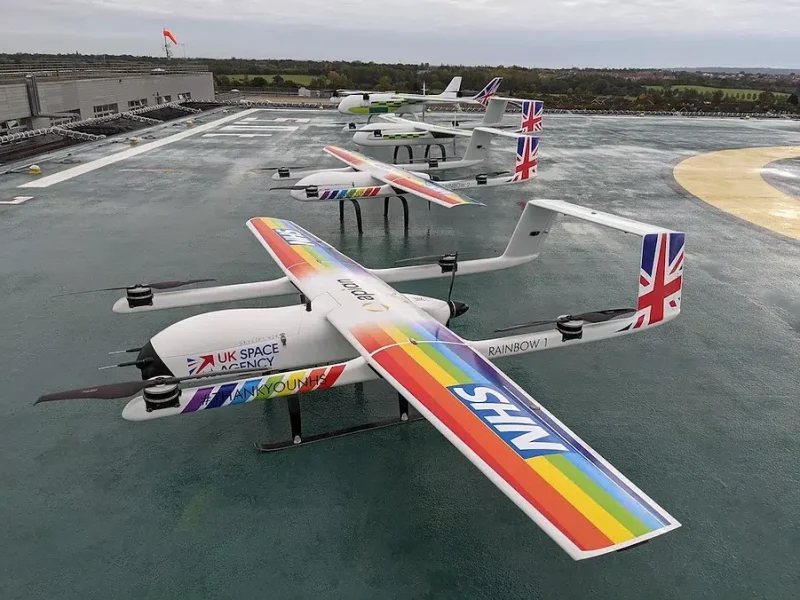The aim of the research was to examine the potential of integrated logistics solutions involving Uncrewed Aerial Vehicles (UAVs, commonly known as drones) operating alongside traditional and sustainable last-mile delivery solutions (e.g., vans, bicycle couriers), in terms of the effects on energy consumption, emissions, costs and transit times, adopting a case study approach based on transportation of medical payloads (e.g., patient pathology specimens, pharmacy products, blood for transfusion) within the UK National Health Service (NHS), involving both simulated and real-world trials.


Investigate the collective impacts of current business-as-usual (BAU) NHS logistics involving transportation of patient pathology specimens, pharmacy products and blood for transfusion across the Solent region.
Develop new simulation tools to quantify the effects (e.g., energy consumption, emissions, costs, transit times) on drones and land logistics systems resulting from: i) potential new types of traffic regulation for shared airspace; ii) drone collision and dynamic automated path re-planning stipulations; iii) in-flight conflict-resolution rules; iv) types of permitted coordination; and v) the availability and positioning of ground logistics systems and infrastructure to effectively interact with and service drones.
Using the simulation tools and live drone flight trials, evaluate the impact on air space, energy consumption, emissions, costs and transit times of a large scale uptake of drones for medical logistics across the Solent region.
Develop fundamental new understandings of stakeholder concerns and the regulatory and governance needs associated with interventions that can realise the potential benefits of drone logistics.
The aims and objectives of the project were achieved through research in a number of different areas: